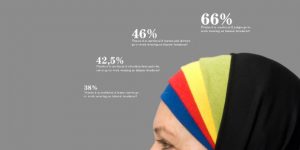Data visualization is the techniques to communicate data or information by encoding it as visual objects. We may call it visual communication. Data Visualization is actually the use of computer graphics to create visual images which aid in the understanding of complex, often massive representations of data.
To communicate information clearly and efficiently, data visualization uses statistical graphics, plots, information graphics and other tools. This way both aesthetic form and functionality need to go hand in hand.
The field of data visualization is constantly changing as new technologies and techniques push the boundaries of data design, and new devices make demands of data visualization experts.

Interactive Maps :- current visualization had moved well beyond Google Maps, now you can tell stories with maps. With the growing amount and prevalence of location data, more and more data visualizations require an interactive map to fully tell a story with data.
Datasets:- While there was a growing number of open datasets available, which is good for data visualization, it means that everybody access to the same datasets. To stand out and be unique people are creating their own datasets.
Draw It:- One interesting technique is ‘Draw It’ chart in which readers are asked for input before the data is revealed to them. It encourages the user to think about the data first, even without knowing the underlying data. Another technique is to turn ‘non-standard data‘ into a usable dataset.
Storytelling:- We don’t often put data and emotion together in one sentence … but the dichotomy between data and emotion is largely false. It is often a good technique to use data visualization to appeal to people’s emotions to get them to identify with the subjects. For example The Washington Post‘s feature on the gender pay gap. It’s just data, but it’s presented with a lot of detail and in a series of steps which encourages the reader to engage with the stories.
Small Multiples:- Small multiples is an interesting way of presenting data visually. With this technique the same image is repeated over and over again (with different data) so that the brain can pick up the slight variations.
Artificial Intelligence and Machine Learning allows data professionals to work smarter not harder. We expect to see many, many more data visualizations from media sources in near future.